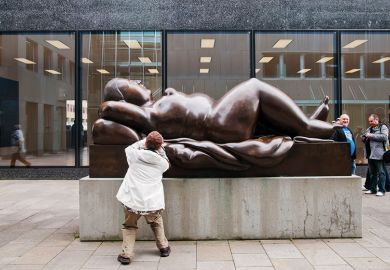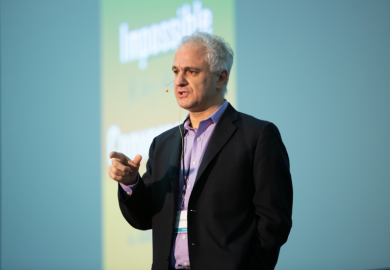Memory gathers; it builds up and connects a story that makes a sense of what it gathers. But it does so by construction, by reaching out and making a sense as well as finding a sense. That construction is a species of the imagination, that same imagination that also constructs works of fiction and indeed of music and art. It is in virtue of this that memory can be seen as part of a capacity that also sees forward, projects a sense. Imagination, as it were, surrounds life with a penumbra, pointing backwards and forwards, which enables it to be understood as human life and human experience, and which enables the world to be understood as an experienced world. Imagination in this way links the inner, the experienced life of a man, with the outer: other people and the objective world. But it does so not merely cognitively, as an instrument of understanding, but as a structuring of value (thus connecting it with action and practical thinking that focuses the projection of imagination forwards). Imagination is in this way the universal medium and origin of human life, understanding, communication, art and science.
Such is the main thesis of Mary Warnock's new book. It is itself a prime instance of that thesis, gathering the thinking and experience of a life, musing illuminatingly on philosophers, novelists, autobiographers, poets, critics, psychologists, biologists, lawyers and theologians; and projecting that gathered understanding forwards into ideas on the policies we (that is, the United Kingdom) should adopt on education, moral commitment in legislation, and care for the environment. It is aimed at a general readership, based as it is on public lectures, and is written with a transparent clarity that does not conceal the depth of its commitment to its concerns.
Few writers today can so fruitfully connect lines of thought and feeling in diverse sources. Consider, for instance, Coleridge's concept of joy in finding meaning in life and the despair at its absence expressed in his Dejection: An Ode. Warnock locates both the joy and the despair again in Proust, and the despair and terror at the absence of meaning in the experiences of autistic children; all these are connected with Collingwood's idea of experience as having one foot in eternity and with Warnock's own example of the way in which the person and life of a writer of an old letter that falls into your hands is "suddenly brought vividly before you".
This main thesis of the grounding role of imagination in our lives is traversed by a pervasive worry: if the imagination is (as Abrams put it) a lamp rather than a mirror, "each of us may seem separately to have a lamp of our own; or at least it may be held that groups of us share a lamp . . . for each group its own imagination, and its own discourse".
Warnock's normal sobriety and sympathy for many different thinkers slips only at this point; where she thinks she has encountered "destructive relativism", the many-lamps view. Yet it is not easy to see how lamps that project creatively the experience of different selves can be guaranteed to have a common outcome. It is true that men communicate with each other; but does that co-ordinate their lamps into a single source of light? The only hope of thinking so seems to be the thought that a society is united in culture, and all its members share the same focus in their imaginative construction, at least in their governing values and symbols. But are we thus united in culture, in the focuses of our imaginative constructions? It is true that we communicate, that our experiences and our imaginations are pervaded by language, and thus involve interactions with other people. In that sense our identities are social. But it seems a long step from there to the view that we all (members of some society or other) share the same imaginative shaping of experience. And if we do not, then quite radical clashes of value and of interpretation must be possible.
Indeed, it looks as if the idea of such a basically united culture forms a clash with present-day reality; could such an idea be maintained for the United States, for South Africa, for Italy, or for Poland? Can it be maintained even for Britain? Warnock, however, sees that step as necessary in order to avoid the cynicism and indifference that arise from the many-lamps view, and is led by it into her prescriptive views on education and law. Law must be based on "consensus morality" (except for "comparatively rare" cases where there is a "genuine clash of moral principles", like abortion).
Education must not only develop imagination; teachers must firmly uphold the moral values that are held as a consensus in the society, but are also (she asserts) cross-cultural. And we need to cultivate children's imagination through stories (especially - in the UK's education system - Christian stories), she thinks, so as to "preserve and pass on . . . some of those enduring values that can be conceived by imagination." She recognises the danger that such views may lead to the imposition on minorities of the majority's values, but still brushes aside the views of those worried that the law or its administration may have a political slant; for if such views were respected, she thinks, we should be faced with a threat of anarchy. In such a case the minority must be overridden; she implies also that their values cannot be genuine.
Warnock's voice is the voice of an age slipping away from us, as she herself half-recognises in lamenting current embarrassment at the use of moral words, our loss of readiness to ascribe responsibility to people for their own behaviour, and our "nervous egalitarianism". But her tendencies towards the imposition of a forcibly unified moral culture are muted and modified by her sense of the complexities of human sensibilities; it is a united but up to a point tolerant culture that she sketches, and one in which new perspectives on the significance for us of our environment can be opened up by the moral imagination grasping the situation of our time. And she is right to say that the present grows out of the past, so that the English dream of a united culture will leave a legacy in the more uncertain world into which we are moving. Warnock infuses that dream with humanity, sympathy and a sense of the movement of symbols (she quotes approvingly Collingwood's thought that a word hovers over its meaning "like a gull over a ship's stern"). We should hope that it is that form of the dream that will echo most in the future of our culture(s), rather than some of the many narrow-spirited versions of it which seek to influence us.
Basil O'Neil is senior lecturer in philosophy, University of Dundee.
Imagination and Time
Author - Mary Warnock
ISBN - 0631 19018 X
Publisher - Blackwell
Register to continue
Why register?
- Registration is free and only takes a moment
- Once registered, you can read 3 articles a month
- Sign up for our newsletter
Subscribe
Or subscribe for unlimited access to:
- Unlimited access to news, views, insights & reviews
- Digital editions
- Digital access to THE’s university and college rankings analysis
Already registered or a current subscriber? Login



